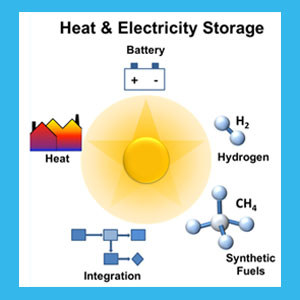Speaker
Dr
Xi CHENG
(PSI)
Description
Fuel cell and electrolyzers can represent a mid-term solution to the present need for a sustainable energy economy; they can be combined with renewable energy resources to build up a novel and sustainable energy based on power grids. One of the main drawbacks which hinders low temperature fuel cells and electrolyzers commercialization is the high costs of these devices. A considerable decrease in their cost can be achieved by developing non-noble metal electrocatalysts which are able to provide high catalytic activity towards the oxygen reduction and evolution reaction (fuel cell and electrolyzer mode, respectively). Particularly, perovskite oxides have recently shown the potentials of high electrocatalytic activity towards oxygen evolution reaction (OER) [1] and oxygen reduction reaction (ORR) [2-3] in alkaline media.
The basic perovskite oxide structure can be represented as ABO3, where A is the larger cation, such as a lanthanide or an alkaline earth element, and B is the smaller cation, generally a transition metal. The ABO3 structure can accommodate cation substitution in a wide range by partial substitution of either the A and the B cation with another element giving (AxA`1-x)(ByB`1-y)O3 compositions. Even though the A-site ion does not really contribute to the electronic conduction, its size and valence were found to be important factors controlling the perovskite crystal structure and as a consequence also the electronic properties. A particular interesting case is La1-xSrxCoO3; at low values of x these oxides are p-type semiconductors while x>0.2 the conductivity changes in semi-metallic or metallic type [4].
In the present work we have investigated the OER/ORR mechanism and activity of single and composite electrodes based on La1-xSrxCoO3 (x=0, 0.2, 0.6, 1) perovskite by thin film rotating ring disk electrode (RRDE) technique. La1-xSrxCoO3 powders were synthesized using a modified sol gel process, starting from an aqueous solution containing La, Sr and Co nitrate precursors. Citric acid and nitric acid were added to the nitrate solution as a complexing agent and oxidant additive, respectively. The solution was then heated under stirring to evaporate water until it changed into a viscous gel and finally ignited to flame, resulting in a black ash. To obtain single phase material, the La1-xSrxCoO3 powder was calcined at 1000 °C for 2 h in air. The specific surface of the oxide catalysts was determined by Brunauer-Emmett-Teller (BET) analysis. Most of the perovskite oxides show low surface area, since their synthesis requires relatively high calcination temperatures. Furthermore, they possess relative low conductivity and for this reason carbon is often added to the perovskite electrode to eliminate any possible concern about their electrical conductivity. However, carbon is known to possess a significant activity towards ORR in alkaline media reducing O2 to peroxide via a two electron process [5]. Differently, in the typical oxygen evolution potential range carbon is expected to be strongly oxidized. Therefore, the influence of carbon addition to perovskite catalysts on the ORR and the OER should be systematically studied.
For the electrochemical characterization, thin films were prepared by drop-coating a cathode ink on glassy carbon disks. The cathode inks were prepared from a suspension made of La1-xSrxCoO3, Na+-exchanged Nafion solution, and acetylene black (Alfa Aesar) in isopropanol. RRDE measurements were performed at room temperature in 0.1M KOH electrolyte, applying different rotation speeds and with a scan rate of 5 mVs-1. A new method was also applied to investigate the chemical/electrochemical activity of La1-xSrxCoO3 perovskite towards peroxide decomposition [6].
Author
Dr
Xi CHENG
(PSI)
Co-authors
Dr
Emiliana Fabbri
(Paul Scherrer Institut)
Thomas J. Schmidt
(Paul Scherrer Institut)

